SIGGRAPH 2004: Synaesthesia
Chair(s):
- Sue Gollifer
-
- University of Brighton
- ISEA International Headquarters
Location:
Los Angeles, California, United States of America
Dates:
August 8th-12th, 2004
Art Show Overview:
See, Hear, Touch: Art for the Senses
Synaesthesia, the SIGGRAPH 2004 Art Gallery, exhibits work by visionary artists that stimulate the senses. This year, more than 150 art pieces encourage the viewers to see, hear, and touch the art. These include 2D, 3D, interactive works, installations, multimedia, telecommunications, computer animation, screen- and sound-based work.
This year’s theme, Synaesthesia, demonstrates how artists can excite the senses using technology. The techniques involved range from low-tech digital plotters to high-end computer graphics and animation. It also features work from both well-established and younger contemporary artists. The works all seek to question our notions of perception and creativity.
In addition to the works of art, the SIGGRAPH 2004 Art Gallery also presents six critical papers and round-table discussions around the theme of Synaesthesia. The presenters are internationally renowned theorists and artists whose work is being displayed in the gallery.
The prestigious Ars Electronica 2003 (Linz, Austria) have chosen the SIGGRAPH 2004 Art Gallery to celebrate 25 years of their existence by presenting a chronicle of their history. The Gallery also includes the work of artists who were prize-winners and exhibitors at Ars Electronica in 2003. It is a truly international show, with artists from around the globe.
The SIGGRAPH 2004 Art Gallery also collaborated with the Computer Animation Festival, Emerging Technologies, Sketches, and Web Graphics to give artists a wider forum to speak and exhibit their work.
Sue Gollifer
SIGGRAPH 2004 Art Gallery Chair
University of Brighton
SIGGRAPH Art Gallery Chair 2004
Sue Gollifer, University of Brighton
Assistant to SIGGRAPH Art Gallery Chair 2004
Alice Ross, 1 Giant Leap
Sub-Committee
Roy Ascott, University of Plymouth
Rick Barry, Pratt Institute
Tracy Colby, Otis College of Art & Design
Madge Gleeson, Western Washington University
Linda Lauro-Lazin, Pratt Institute, SIGGRAPH 2005 Art Gallery Chair
Karla Loring, Museum of Contemporary Art Chicago
Bonnie Mitchell, Bowling Green State University
Ruth West, University of California, Los Angeles; University of California, San Diego Center for Research in Computing and the Arts
Committee(s):
- Bonnie L Mitchell
-
- Bowling Green State University
- Bonnie L Mitchell
-
- Bowling Green State University
General Committee:
Additional Committees:
Exhibition Artworks:
-
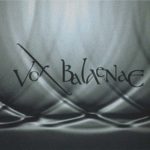
Voice of Whale
[Heebok Lee]
Categories: [Animation & Video] -
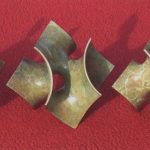
Volution's Evolution
[Carlo Séquin]
Categories: [3D & Sculpture] -
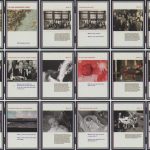
What if it happened here?
[Elsi Vassdal Ellis]
Categories: [2D & Wall-Hung] -
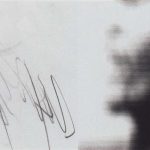
Word Power
[Albert Giros]
Categories: [2D & Wall-Hung] -
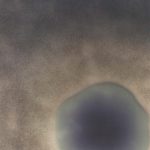
Worley Basin
[Dylan Sisson]
Categories: [3D & Sculpture] -

Written Brooch
[Rebecca Strzelec]
Categories: [3D & Sculpture] -
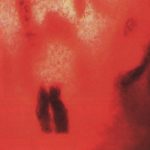
X and Y (number 2)
[Anna Dumitriu]
Categories: [2D & Wall-Hung] -
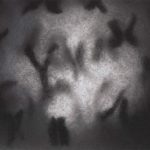
X and Y (number 5)
[Anna Dumitriu]
Categories: [2D & Wall-Hung] -
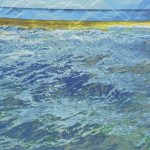
Yellow Boat
[Peter Hardie]
Categories: [2D & Wall-Hung] -
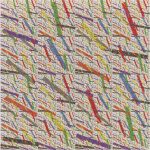
ziggi1
[Philip Wetton]
Categories: [2D & Wall-Hung] -
![[ineffable]](https://digitalartarchive.siggraph.org/wp-content/uploads/2017/10/2004_Flanagan_ineffable-150x150.jpg)
[ineffable]
[Mary Flanagan]
Categories: [2D & Wall-Hung]
« First
‹ Previous
1
2
Exhibition Writings and Presentations:
-
Title:
Ars Electronica: 25 Years of the Digital Avant-Garde
Author(s):
Category: Panel / Roundtable
Abstract Summary:
Celebrating 25 years of Arg Electronica, the panel provides not just interesting historical information, but also comprehensive insight into new directions of digital art.
[View PDF]Title: Audiovisual Discourse in Digital Art
Author(s):
Category: Essay
Abstract Summary:
This paper discusses art systems that employ image and sound as equal elements. This can be called the evolution of the “audiovisual discourse” in art and technology. Recent software for manipulation of audio and visual material is briefly described, and audio/visual digital artworks, developed during an artist-in-residence-based project, are illustrated as examples of contemporary artistic projects concerned with this theme. Different artistic approaches in the use of audio/visu al systems are identified on the basis of the historical research and the second author’s work, as a technologist, in collaboration with the artists participating in the project. Finally, the role of the computer as audio/visual instrument is discussed.
[View PDF]Title: Interface as Image: Image Making and Mixed Reality
Author(s):
Category: Essay
Abstract Summary:
This paper will explore the use of the graphical user interface as art, product and inspiration, drawing on my own practice as a digital image maker and installation artist, and a theoretical investigation of digital image making in hybrid art practice. As the boundaries and reference points between physical and digitally grounded imagery become less defined, the possible duality and interplay for a com bined image space moves towards a seamless self-referencing and continuous activity. A visual feedback loop or strip, where the clues of originality become increasingly hard to differentiate and, perhaps, increasingly irrelevant, a state of “deterritorialisation.”1 Some thought will be given to examining the potential for mapping digitally ground ed imagery into both two- and three-dimensional physical space to create a mixed-reality experience and to what can happen when we extract the real-world metaphors from the digital environment and take them back into the physical world. Questions about the trans parency of the human/computer interface, and about just how trans parent we really want this to be, are also raised. What are we left with when we remove the content from the graphical user interface? What traces of human interaction (from the physical) become evident, and what are the “aid memoirs” we employ to assist us in navigation and colonization of the digital landscape?
[View PDF]Title: Researching the Future: (CAiiA-STAR and the Planetary Collegium)
Author(s):
Category: Panel / Roundtable
Abstract Summary:
Taking the Planetary Collegium as their starting point, members of the round table address research issues as they relate to the development of practice and theory in the context of collaborative criticism and inquiry across a wide field of knowledge and experience. The Collegium network is worldwide, in terms of its meeting and conference locations. the cultural identity of its members, and its ambition to develop nodes based on and complementary to its unique procedures and methodologies.
The Collegium emerges from 10 years of experience with CAiiA-STAR in gathering doctoral and post-doctoral researches of high calibre whose work transcends orthodox subject boundaries, and whose practices are at the leading edge of their fields. We are living in a time in which old cultural and academic structures need to be replaced by research organisms fitted to our telematic, post biological society. The Collegium combines the physical, face-to-face transdisciplinary association of individuals with the nomadic, trans-cultural requirements of a networking community. The panelists, all members of the Collegium at various stages in its development, present their personal visions of the direction future research might take and the structures needed to support it.
Title: Sensational Technologies
Author(s):
Category: Essay
Abstract Summary:
This paper is part of an ongoing study of performances that make a physical and psychological connection with the public by synthesizing various media such as sound, image, smoke, smell, etc. The research project will focus on the history of the live image and try to connect this to current practices in popular culture and art, for example live video jockey (VJ) performances and interactive-technology-based installation art. For our presentation at SIGGRAPH 2004, we will con centrate on three cases that make use of state-of-the-art technology in order to create specific bodily sensations. We will also take their temporal character into account and explore whether, and if so, how these “events” can be presented and preserved for future genera tions as part of our cultural heritage.
[View PDF]Title: Synaesthesia
Author(s):
Category: Panel / Roundtable
Abstract Summary:
This Panel discusses synesthesia, which typically involves sensory crossover among the basic senses (vision, hearing, taste, smell, and touch) within the normal range of sensation.
[View PDF]Title: The Kitchen as a Graphical User Interface
Author(s):
Category: Essay
Abstract Summary:
Everyday objects can become computer interfaces by the overlay of digital information. This paper describes scenarios and implementa tions in which imagery is digitally painted on the objects and spaces of a kitchen. Five augmented physical interfaces were designed to orient and inform people in the tasks of cleaning, cooking, and accessing information: Information Table, Information Annotation ofKitchen, HeatSink, Spatial Definition, and Social Floor. Together, these interfaces augment the entire room into a single graphical user interface.
[View PDF]Title: The Noetic Connection: Synesthesia, Psychedelics, and Language
Author(s):
Category: Essay
Abstract Summary:
The literatures that touch on synaesthesias – scientific, art-historical, literary, phenomenological, ethnographic, psychedelic – vary widely in their definitions, their interpretations, and their degree of comfo with the first-person, subjective nature of experiential reports. The signi cances given to synesthetic experiences are similarly wide ranging. This paper explores the relationships among synaesthesias, psychedelic experience, and language, highlighting Terence McKenna’s synesthetic language experiences on DMT and magic mushrooms. We describe the complexities of creating and pe orm ing with the Synestheater, a system that provides the means to weave together, in multiple mappings, two or more complex visual, aural, and linguistic systems in live pe ormance.
[View PDF]Title: Thoughts on Hesse, Digital A and Visual Music
Author(s):
Category: Essay
Abstract Summary:
This essay describes the influence of Hermann Hesse’s ideas on my creative work and how I create interactive music sculptures and visual music. In his book, Magister Ludi, Hesse describes a game in which art and music blend together in a way that allows for transformation of creative content into various forms of media. “Variations” is an ongoing exploration of interactive sculpture and visual music that began in 1999 and still continues. The following describes my thought process for early versions of this work, as well as for “Variations 03,” an interactive music installation that was exhibited as part of the SIGGRAPH 2003 A Gallery. My approach in creating this work was to develop a three-dimensional sound matrix that viewers could change as they interacted with the sculpture.
[View PDF]



